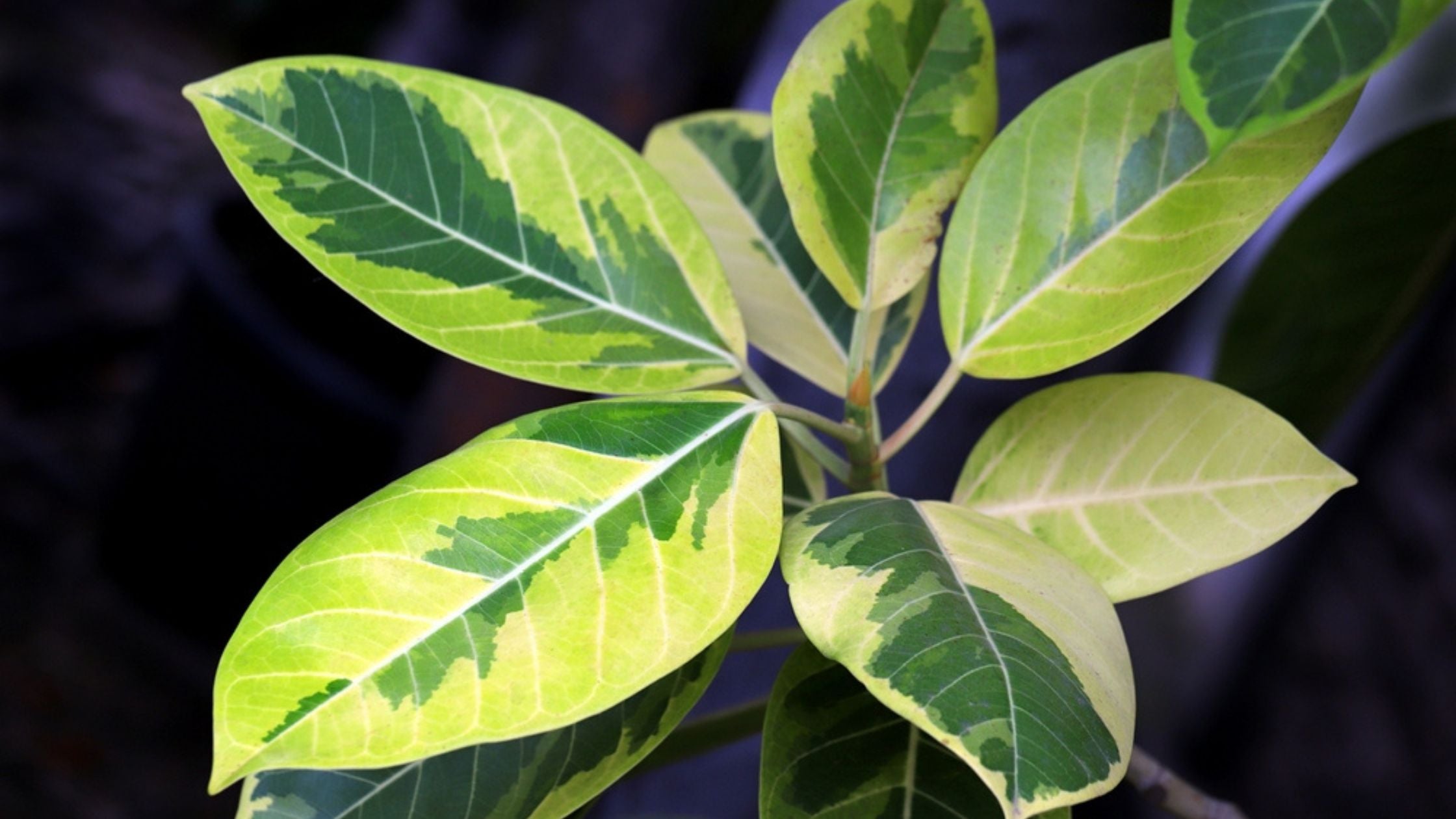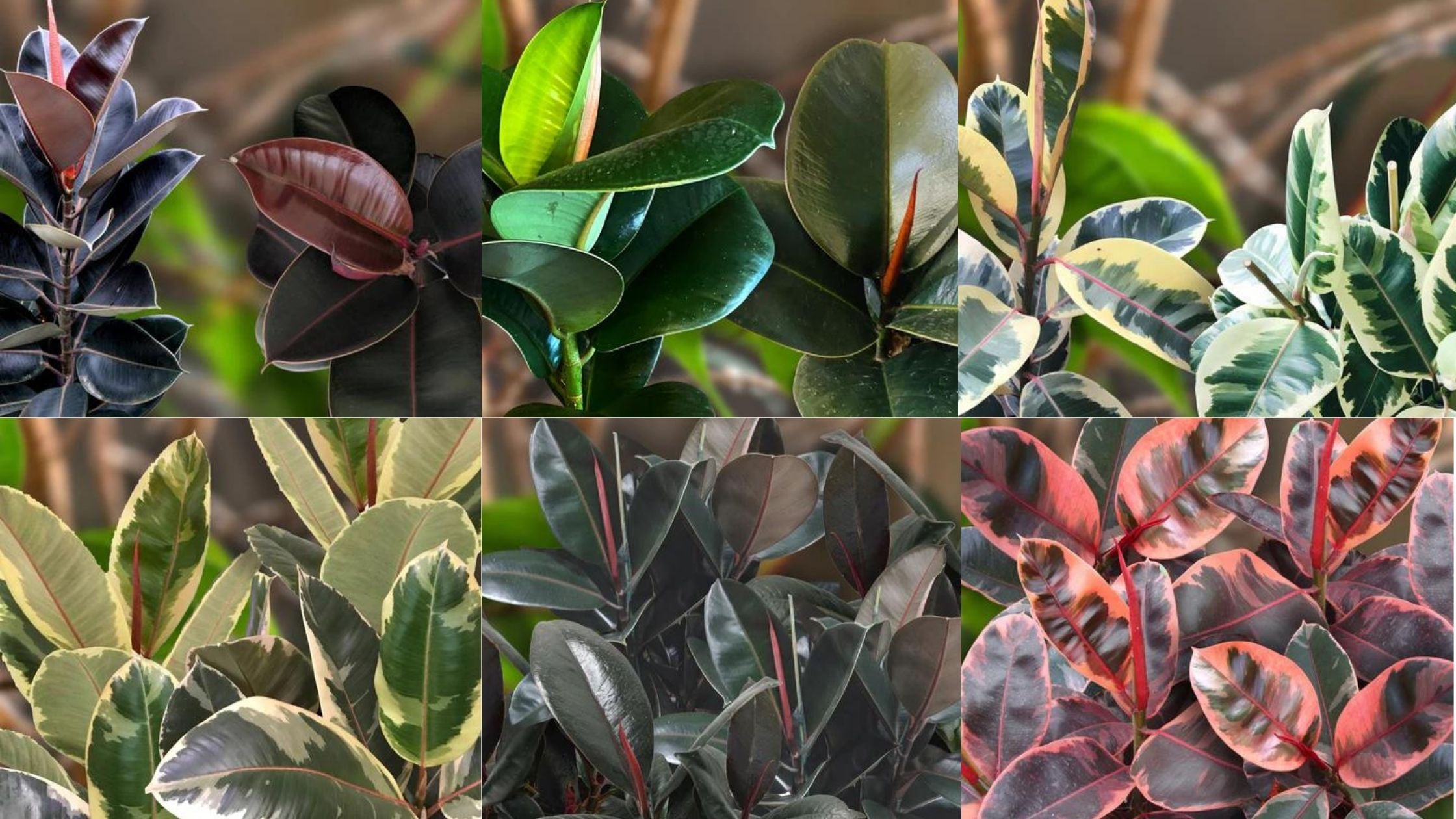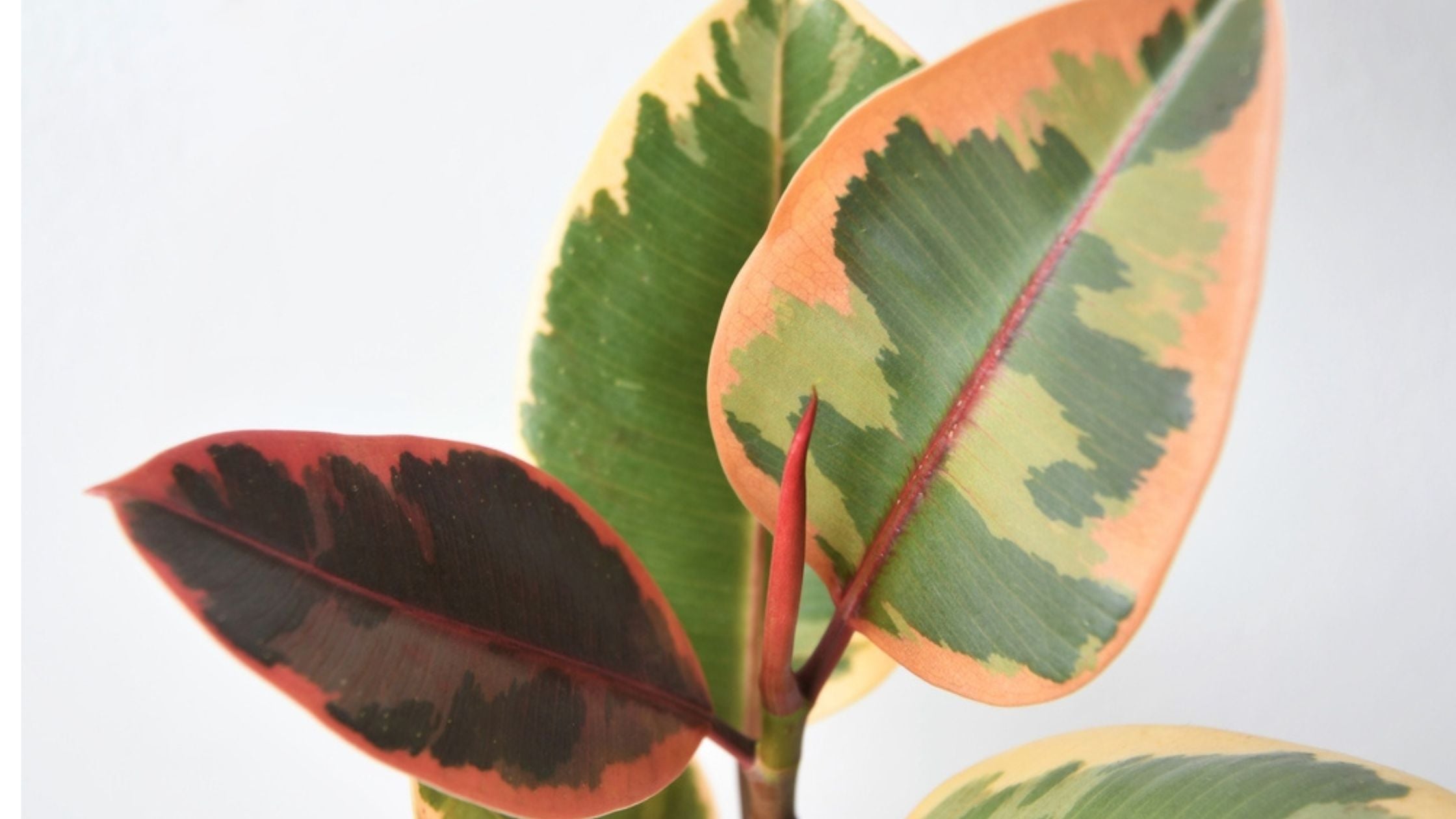
Ficus Yellow Gem Care
The Ficus yellow gem is a rare variety of the Ficus altissima. They were cultivated relatively recently, so consider yourself lucky if you find one at your local plant shop.
The leaves of the original Ficus altissima come in an even green color, but the yellow gem has two-tone (variegated) leaves patterned in lime green and dark green.
All ficus altissima grow vertically with ovate (egg-shaped) leaves, just like the more common ficus elastica.
If you want to take on this unusual species, bear in mind that they are easy to cultivate as long as you stick to a regular care regimen. This plant is sensitive to neglect and sudden environmental changes. Let's discuss the details of Ficus yellow gem care.
Introducing the ficus altissima
The Ficus altissima belongs to the Ficus genus, which contains around 1000 species. Many ornamental houseplants, including ficus elastica and ficus benjamina (weeping fig), belong to this group. Ficus altissima has a few common names, including lofty fig, false banyan, and council tree.
This species is highly adaptable. Its original habitats are the mountains and plains of Southern China, where it grows between 100 to 2000 meters above sea level. They've traveled far and wide since and are now considered an invasive species in many parts of the world.
The Ficus altissima is technically a tree. It reaches 25 – 30 meters tall and 40-90 cm in diameter in the wild. However, your houseplant will not reach these lofty heights indoors and confined to a pot. At a maximum, the potted plants will grow to 1.82 meters.
Temperature, position, and lighting
The yellow gem thrives in bright, indirect sunlight. Direct sunlight will scorch the leaves, but a low-light spot will make for an unhappy plant. West or east-facing windows are best, while north and south-facing windows will be too dark and bright.
You'll know you're giving your yellow gem enough light if it maintains a pronounced color contrast between the lighter and darker parts of the leaves. If your plant is not getting enough sunlight, the two-tone colorway will fade.
Keep your yellow gem away from drafts during the winter. In the summer, place it outdoors for optimal health.
Make sure the room is between 68 and 85 degrees Fahrenheit.
Watering
Both dry and waterlogged soil will kill the Ficus yellow gem. Never let its soil dry out completely. A good rule is to water every time the top 4 inches of the soil feel dry to the touch.
When you water, run the soil under a tap for 30 seconds. Then, place the pot on a dry surface for half an hour to drain any excess moisture.
Remember to keep a regular watering routine, as this plant is sensitive to neglect. Your Ficus yellow gem may require water every few days in high summer and every week or two weeks in the winter, depending on your local climate.
Fertilizer
Feed half-diluted general-purpose houseplant fertilizer once a month during spring and summer, cutting back to once every two months in the winter.
Humidity
This plant prefers relatively high humidity. Here are tips for keeping the air around your plant moist.
- Place a group of plants on a tray of pebbles with water halfway up the depth of the pebbles. Ensure the bottom of the pot doesn't touch the water, as this will make the soil too soggy. The idea behind the pebble tray is that the pebbles give a larger surface area for water to evaporate off of. Grouping plants also increases humidity in their immediate surroundings.
- Mist with a bottle spray several times a day. If you have a busy schedule and are likely to forget, opt for the pebble tray.
- Get a humidifier. This is one of the most effective ways to raise air humidity, especially if you have many indoor humid-loving plants.
Potting mix
The potting mix should be full of nutrient-rich organic matter but not so heavy that it retains all the moisture. Use regular indoor houseplant soil mixed with one part perlite or coco coir for draining. You can even add a two-inch layer of coarse gravel to the bottom of the pot to aid drainage. This layer will remove any excess moisture from the potting mix above it.
We recommend Southside Plants Trail Mix, an ideal chunky potting mix for tropical plants with ropey roots like the Ficus yellow gem.
Repotting
You should repot your Ficus yellow gem yearly since it does not like being root-bound. The new pot should be about 2 to 3 inches wider than the diameter of the root ball to prevent root rot.
Repot during the active growth season in spring or early to mid-summer. During this period, the plant grows vigorously enough to recover from any tissue damage suffered during the move easily. This timing is vital for the Ficus yellow gem because it can react badly to sudden environmental changes.
Pruning
You only really need to prune your yellow gem when you want to limit growth. You can also spruce up your plant by removing dead leaves. Don't take more than 10 percent of healthy leaves when you prune.




Leave a comment
This site is protected by hCaptcha and the hCaptcha Privacy Policy and Terms of Service apply.